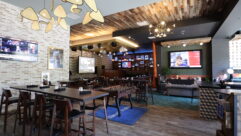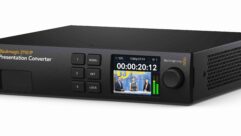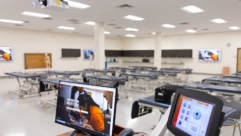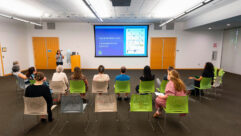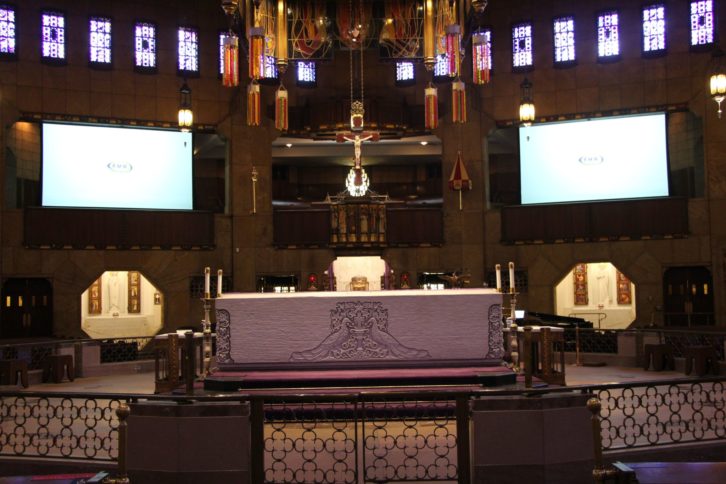
Positioned impressively on the horizon in Royal Oak, Michigan, a suburb of Detroit, stands the prominent landmark limestone church complex and tower of The National Shrine of the Little Flower Catholic Church. This beautiful place of worship was declared a National Shrine, one of only five in the country, in 1998 at the United States Bishops’ Conference. In 2014 Pope Francis granted the title of Minor Basilica to the majestic National Shrine.
Church directors wanted to bring the honored church into the 21st century and upgrade their outdated video and audio system, but they had significant reservations regarding the preservation of the building’s rich architectural history.
As installers and integrators, specialist RMW Productions was charged with modernize the church systems, while retaining architectural integrity. A family-owned business providing design and integration of professional sound, video, lighting, and communications, RMW Production specializes in places of worship and takes into consideration the aspects of the unique architecture of every location to fulfill the client’s unique purposes and visions for technology.
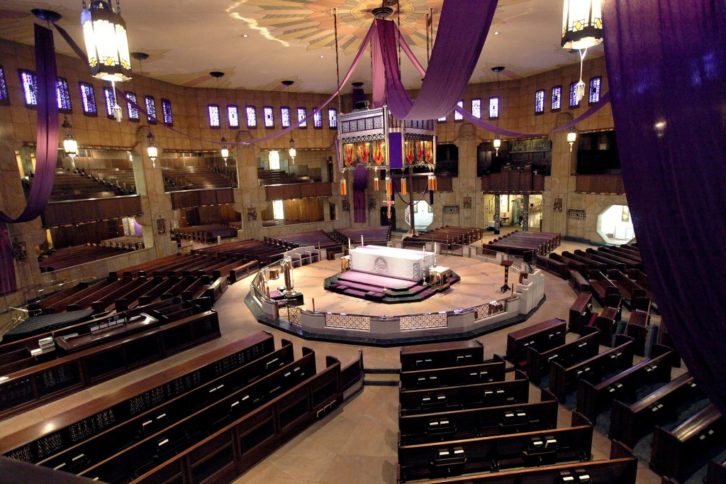
RMW Productions specified Key Digital to design and provide a robust system for this delicate project, where the team faced the numerous challenges of a sacred historical building.
To maximize the technology improvements, the Shrine of the Little Flower chose first-class upgrades to the main sanctuary video system with added displays in the outer areas of the church such as the narthex areas and front entrances. The equipment had to accommodate the integration challenges of small rack size, the option to expand the system at a later date, multiple video connection areas with control, and the need for high definition video at great distances. With these important considerations in mind, Key Digital designed a system using their KD-IP922 Enterprise AV over IP system UHD/4K encoders and decoders, the KD-SX440WP simplistic all-in-one presentation switcher wall plate scaler and extender set, and Compass Control Pro, a modern fully integrated control system using iOS devices to replace traditional control interfaces.
With the development of KD-IP922 Key Digital wanted to offer installers a more simplistic and flexible means for creating and managing video distribution systems. KD-IP922 encodes content from connected HDMI sources and decodes the desired content at each display and projector across a managed network while interfacing with virtually any controllable device. The KD-IP922 is a completely flexible and expandable system, where a single encoder was added for each of the shrines video sources and a single decoder for each display and projector. Not only was Key Digital’s Enterprise AV over IP a fit for updating the AV system at Shrine of the Little Flower, it is also a fit for the church’s user requirements.
To reconcile the limited rack size, Key Digital’s de-centralized Enterprise AV over IP system encoders were installed at the location of the video sources such as stages and cameras, and the decoders were installed at each projector and display with the system’s Araknis Network Switch as the only essential centralized piece of equipment.
The user-friendly and aesthetically pleasing KD-SX440WP wall plate with HDMI and VGA plus audio inputs offers auto-switching and analog video scaling to ensure that the various church presenters can simply plug-in and press one button to easily choose between their two sources.
To accommodate the large size and varied areas to be controlled in the building, Key Digital’s Compass Control Pro provided the seamless and customized control that the church was missing. Because Compass Control Pro is a blank slate for design, the user interface was artfully arranged and programmed with a focus on providing ease of use to the end-user. The music directors and other day-to-day users now have a simple one button press on the iPad called “Choir Feed Preset”. Once the button is pressed all outputs switch to use the choir area wall input, the two main sanctuary projectors turn on, the projector screen drops, and the shades behind the screens drop to drown out oversaturation of light from the windows. When the users are done with the video system in the church they simply navigate to the power page and press the “System Power Off” button for a macro to take care of lifting all screens and shades and turning off the sanctuary projectors. An advanced button was programmed into that same home page so that complex switching and control of the system can be done with ease for those users that need actions beyond the simple presets. For more in-depth control the remotes of the devices connected to the system are accessible through the iPad and the end-user may select custom switching options of the inputs and outputs.



